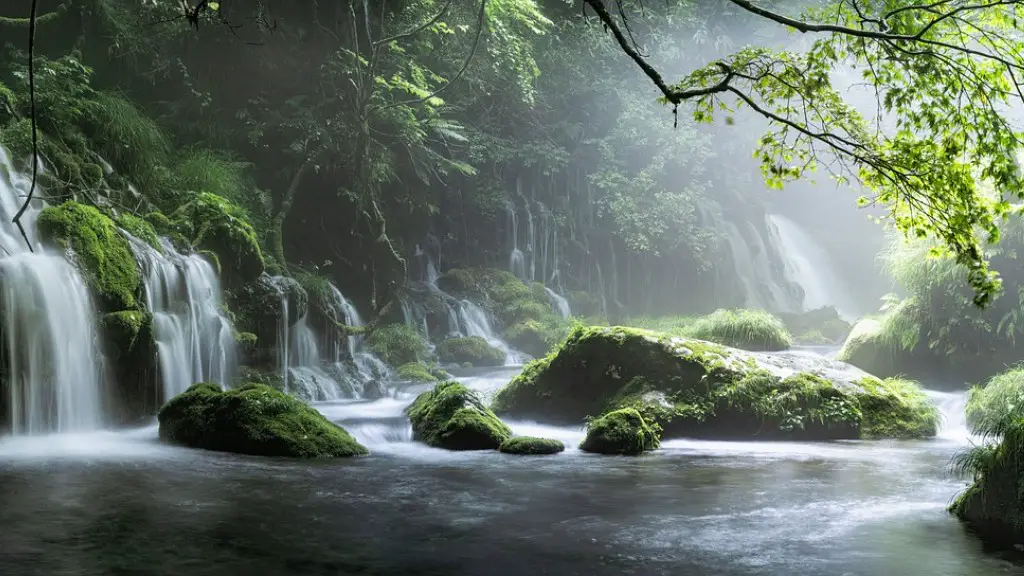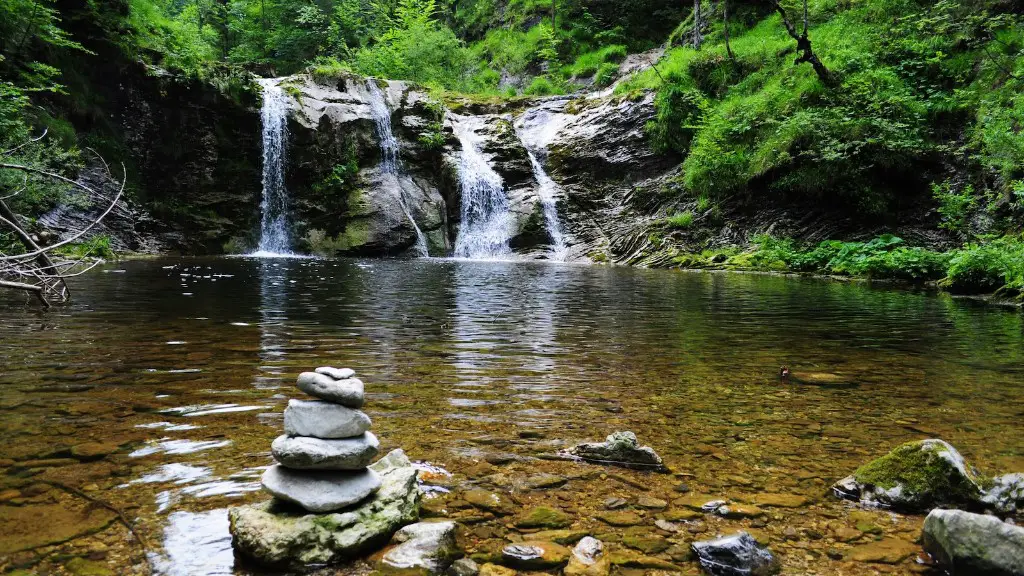Background
The Mississippi River is the second largest river in the United States, stretching from the Mississippi Embayment in the north to the Gulf of Mexico in the south. It is the major drainage artery for 31 states and two Canadian provinces, and is 2,320 miles in length. The Mississippi River is extremely important to the United States from an industrial, agricultural, recreational, and environmental standpoint, and is considered one of the nation’s most important waterways.
Causes of Muddiness
The discoloration of the Mississippi River can be attributed to several causes. The primary cause is sediment runoff, where a high percentage of the river’s water comes from tributary rivers located upstream of the main river. These tributary rivers contain large amounts of sediment, which get washed downstream and accumulate in the Mississippi River. Additionally, agricultural runoff from farms and other sources of erosion can affect the muddy color of the river.
Eutrophication
The high nutrient content in the sediment runoff can also lead to eutrophication, or an increase in the growth of aquatic plants. This can cause a drastic reduction in water clarity as the growth of these plants consumes large amounts of oxygen, which leads to an oxygen-deficient environment. This can be an issue if the river is used for recreational purposes, such as fishing, swimming, or boating.
Impact on Wildlife
The Mississippi River is home to a variety of wildlife, including birds, reptiles, fish, and invertebrates. Due to the muddiness of the water, a majority of these species may be impacted in some way. The river’s sediment is often composed of sedimentary rock particles and minerals, which can lead to heavy metal contamination. The increased sedimentation also affects the brightness of the water, which can impede the sight of some species of fish.
Human Impact
Humans are also responsible for contributing to the muddiness of the river. Many industries rely on the river for transportation, manufacturing, and energy production, and these activities can lead to a release of pollutants and sediment into the water. Additionally, industrial waste is often dumped into the river, which can lead to an increase in the amount of sediment.
Controlling the Muddiness
The largest issue is controlling the muddiness of the river, and this is something that is being addressed by a variety of methods. There are organizations, such as the Mississippi River Commission, that are working to ensure that the river is maintained in a way that is both safe and beneficial. Additionally, a number of organizations are advocating for increased efforts to reduce industrial and agricultural runoff, as well as increased awareness of the importance of preserving the river.
Preservation
Additionally, a variety of conservation measures are being taken to ensure that the Mississippi River is preserved in its current state. These include efforts to reduce erosion, planting cover crops to protect soils, and restoring natural ecosystems. Additionally, organizations such as the Environmental Protection Agency are working to reduce the amount of pollutants that enter the river.
Conservation
There are also organizations, such as the Nature Conservancy, which are dedicated to protecting and restoring the river. The Nature Conservancy works to protect and restore habitats that are important for aquatic species, reducing pollution, and providing education about the importance of preserving and maintaining the river’s ecosystem.
Education
Education is another key component of preserving the Mississippi River. Programs such as the Mississippi River Education and Research Center are dedicated to providing educational curricula to students and the general public, and this can help to increase awareness and understanding of the importance of conserving the river.
Management and Regulation
The management and regulation of the Mississippi River is an important part of preserving the river’s ecosystem. The United States Army Corps of Engineers is responsible for regulating the river’s flow, and they employ a variety of measures to maintain a healthy environment. Additionally, regulations are in place to ensure that all industries maintain the necessary permits and adhere to all legal requirements when it comes to dumping materials into the river.
Pollution
Pollution is also a major contributor to the muddiness of the river, and there are multiple sources of pollution that contribute to the discoloration. Industrial waste, agricultural runoff, and sediment are all sources of pollution, and efforts are being made to reduce the amount of these pollutants that enter the river. Additionally, organizations such as the Environmental Protection Agency are working to reduce the amount of pollutants that enter the river, and these regulations are vital for preserving the river’s ecosystem.
Nutrients
Nutrients are another source of pollution, and they can cause excess growth of aquatic plants, which leads to a reduction in water clarity. The Mississippi River is being monitored for nutrient levels, and efforts are being taken to reduce the amount of nutrients that enter the river.
Wastewater Treatment
Wastewater treatment is another important aspect of preserving the Mississippi River. Treatment facilities are responsible for removing pollutants, solids, and other contaminants before they are allowed to enter the river. Additionally, the water is treated to reduce the amount of hazardous materials, such as heavy metals and other toxins.
Monitoring
The Mississippi River is also monitored for any changes in water quality, and this helps to ensure that the river remains healthy and safe. Organizations such as the United States Geological Survey and state and local agencies are responsible for monitoring the river’s health, and they employ a variety of methods to track changes in the water quality.
Biodiversity
The Mississippi River is also home to a variety of species of fish, birds, reptiles, and invertebrates, and preserving the river’s biodiversity is essential for maintaining a healthy environment. Conservation efforts are in place to protect and restore habitats that are important for these species, as well as to reduce the amount of pollutants and sediment entering the river.
Sustainability
The goal of preserving the Mississippi River is to ensure its sustainability. Organizations are working to reduce the amount of pollutants entering the river, to restore habitats and plant cover crops, and to educate the public about the importance of preserving the river. Additionally, government agencies and organizations are working to monitor and regulate the river for any changes in water quality, and this is essential for maintaining the health and safety of the river.




